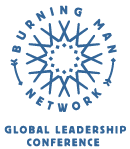Last year, once the dust had settled on another Burning Man event, Operations Director Charlie Dolman didn’t focus on the nuts and bolts of how things had gone. He found himself focusing on a paper cut.
The paper cut belonged to a participant who had rocked up to RAMPART for treatment — along with 12,000 other people seeking Band-aids for minor misadventures.
“That person didn’t think about going to the desert and being prepared to look after themselves, or they didn’t think to turn to their neighbors, and there is a whole city out there that can look after itself,” says Charlie.
Radical Self-reliance notwithstanding, every minute (and dollar) the Emergency Services Department spends on silly cases also takes away from their capacity to handle serious ones.
But these medical misdemeanors are just the tip of the iceberg. There’s been a litany of disturbing incidents and behavior in Black Rock City these past few years, such as the vandalism of the Iron Monkeys’ Piazza di Ferro. Burning Man Project has developed a response plan called Project Citizenship, which was previewed at the Global Leadership Conference on Friday.
“Have you ever tried to vandalise iron work shit? That’s really hard. That wasn’t an accident.”
The project aims to tackle trends such as an erosion of participation and rise of a consumer approach to the event; a lack of preparedness; increased vandalism, a decrease in civility; an attitude of entitlement towards Burning Man staff who are seen as being there to “serve” the needs of paying punters; and a lack of respect towards participants gifting their time and skills.
Burning Man identified these trends with the help of Census, Event Operations, participant feedback, internal staff dialogues and extensive outreach to Regional Contacts and community leaders.
The Experience on the Ground
Festivals vs. Burning Man
By John “Halcyon” Styn
#PlayaMade: Creating a Community That Goes Deeper Than Economics
By Mia Quagliarello
“At the event this year, the operations went pretty well, but talking to lots of people during the event and after event, something was really bubbling up. And it was a feeling that manifested in various different ways,” says Charlie.
“We had Rangers, Gate and members of other teams saying, ‘I feel like my gifts are taken for granted’, and participants are not realizing that people’s skills, time, money, love, months of work are being donated to keep them safe and to enhance their experience’,” he says.
“And we had significant vandalism issues with the Iron Monkeys guild. Have you ever tried to vandalise iron work shit? That’s really hard. That wasn’t an accident. That was malicious intent to damage something that is not easy to damage.”
But what worried Charlie the most was feedback from the Ranger Council and Gate leadership. “It doesn’t feel like we’re family anymore,” they told him.
“And that’s really sad,” says Charlie.
Unwelcome attention from some famous brands have only amplified concerns.
“You have videos like, ‘Oh, the Places You’ll Go’, which have been viewed 3.5 million times. Videos about Burning Man are getting hundreds of thousands of hits. So whether we like it or not, this thing that we love is being compelled into a space that is the regular culture, which is primarily consumerist rather than participatory,” says Charlie.
And so the organisation decided to make this its thing for the year. “This is more important than fixing whether a building is in the right place. We need to use all of our efforts as a global family… to bring people back into the family,” says Charlie.
Why Is It Happening?
“We’ve seen the Quiznos thing, and this year there was a [7Up] thing. You have videos like, ‘Oh, the Places You’ll Go’, which have been viewed 3.5 million times. Videos about Burning Man are getting hundreds of thousands of hits. So whether we like it or not, this thing that we love is being compelled into a space that is the regular culture, which is primarily consumerist rather than participatory,” says Charlie.
Developing the Project
According to Jim Graham, Senior Advisor Special Projects for Burning Man’s Communications Team, 2016 was a watershed year.
“2016 was really the tipping point for us but [these trends] were something we had identified throughout the past few years,” says Jim. “And over the evolution of identifying these challenges, we also found that a lot of the Regionals were facing them.”
So part of the development of Project Citizenship included reaching out to Regionals worldwide to share a collaborative document. This document included a compilation of feedback from BRC staff and volunteers on what people witnessed at the event, what they saw as the root cause and what to do about it.
The input from the Regionals has helped create the Project’s key messages around Participation, Self-reliance, Be nice to others and yourself and MOOP.
A series of campaigns will provide platforms for these messages, including educational videos; Burner Express and airport passenger acculturation; inserting messages into the ticketing process; a Theme Camp Symposium and ambassador program; Reddit AMAs; blogs; Instagram tags such as #notafestival and #playamade; and more.
Some of these campaigns have already begun and will continue to be rolled out over the next five months.
But there’s no single solution for a complex problem. Moreover, a culture is what we all imagine and create together, so a cultural issue requires collective action.
And just as the theme of the Global Leadership Conference has encouraged attendees to think about sparking a new citizenship, maybe we all need to ask ourselves what it means to be a citizen of our temporary art cities and communities, and what do we all need to do to preserve the integrity of what we have created together?
Top photo by Chuck Revell




 #burningman #playabike #playamade #artbike #unikitty
#burningman #playabike #playamade #artbike #unikitty